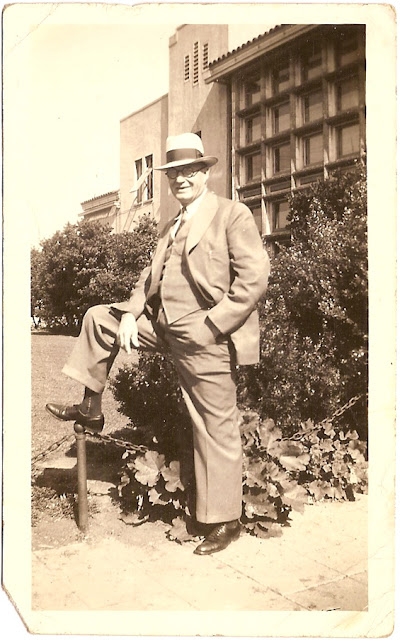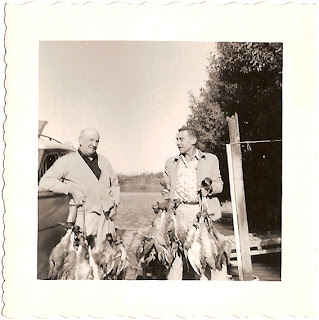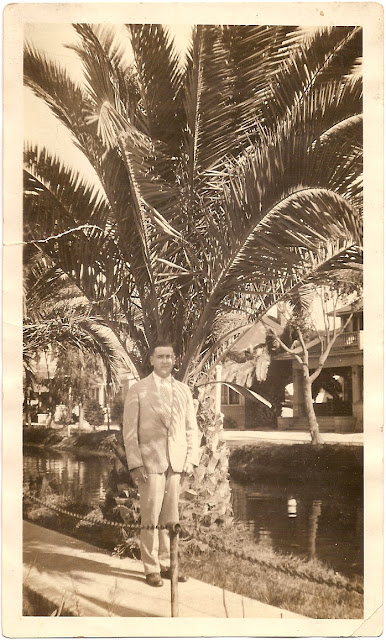Having just attended
a regional conference (and been lusting
after
a national one looming on the horizon), my mind naturally gravitates to
the administrative benefits of being associated with genealogy groups, be they
national or local in scope.
“Why is that?” you may ask.
There are several reasons:
- Educational
opportunities
- Research
resources
- Collaborative
effort
- Networking
benefits
Before examining these, let’s remember what’s been happening
in the family history research world over the last few decades.
Yes. I said decades.
If you have been one of those lonely researching souls
sequestered in a dusty corner of an archival institution or library, cranking
away at a microfilm reading machine, you understand what I mean: we don’t do
that sort of work much any more.
Now, we sequester ourselves in the comforts of our own
homes, where we can perform many of those solitary searches online.
Somehow, crossing the midst of that digital divide, we’ve
retreated farther and farther from any inclination to get out and share our research
trials, tribulations, and even victories, with others, face to face.
Becoming involved in a genealogy organization, whether local
or regional, helps counter that tendency—and gives us a much needed break from
the monotony of the solitude. It also gives us a chance to “Give Back”—the more
experienced genealogists helping the novice researchers—and pass along
techniques to the next generation.
Besides these altruistic ideals, let’s take a closer look at
those practical reasons I mentioned above.
Educational Opportunities
Though I’d like to think
I know everything, I admit I sometimes fall short of the mark. I suspect you
feel the same way about your genealogical research, too. Having a local genealogical
society to resort to for those training needs can make all the difference.
The benefit of groups is in the power to aggregate resources,
and educational opportunity is one such resource. While you could spend a
fortune flitting from state to state, chasing all the training sessions offered
by other societies, by joining—or forming—one of your own, you benefit from the
collective power of the local group to attract and feature effective trainers
who can speak to the research needs of your organization.
With a local group, instead of merely being a passive
learner just there to soak up whatever opportunities stumble across your path,
you can take an active hand in shaping your own future educational
opportunities. Groups are small enough to accept—more than that, welcome—your input,
yet large enough to convert best-laid plans into action.
By joining together with local or regional groups, you can
meet and discover others who share your research interests, and together seek
out learning opportunities that will benefit the larger community.
At the same time, you might be pleasantly surprised to
discover that the knowledge you have already gained may be just the technique
or facet someone else in the group could benefit from learning—and voilà!—you may find yourself becoming an
instructor, too.
Research Resources
The power of groups is in what they can achieve by putting
their minds together and tackling problems.
One such longstanding problem for the genealogical
researcher has always been accessing appropriate resources.
In a group such as a genealogical society, members can
determine which resources they can make available to their local community.
Genealogy societies become preservers of history and advocates for the family
history saga of their own community’s roots. Many local genealogical societies
see this as part of their mission in two ways:
- Assembling
a collection of books and documents pertinent to the needs of their
members as well as the heritage of their community
- Preserving
documents and even publishing books reflecting historic records of the
people and places within their geographic area
Some societies have assembled impressive
collections of books, manuscripts and other collectibles not commonly accessible
to researchers elsewhere. I know my own local society has worked on such
projects since their inception nearly half a century ago. I’m certainly grateful
to another such society—the
San Mateo County Genealogical Society in Redwood
City, California—for the material I’ve found in their collection when working on some of my own projects.
I rather suspect that respected libraries such as the Allen
County Public Library started their genealogical collection in much
the same way as many county societies have done. Whether we realize it or not,
there are many such groups dotting the archival landscape of our continent,
which year after year continue to focus on achieving the goal of providing
excellent research resources.
Collaborative Effort
We talk often about the power of groups to achieve what
individuals would be hard-pressed to accomplish on their own. Past generations
might have expressed that concept through the saying, “Many hands make light
work.”
Now, the buzz word is “Crowdsourcing.”
Either way, it reflects something so many of us have
intuitively realized: we get so much more done if we come together as a single-minded
group with a goal.
If your interest—and, unfortunately, your “brick wall”—is,
say, Eastern European ancestry, why sit in your kitchen and bemoan the lack of
online resources? Get in touch with fellow group members at your community’s
genealogical society, and form an interest group.
The point is, even if there isn’t already a special interest
group tailored to your research needs, every group started with a few people
energized with a mission. If there are two of you with a desire to research the
same area, you can share your passion with others and multiply your effort and
your resources.
Networking Benefits
Networking opportunities can be among the most useful tools
in the researcher’s toolbox. People—and the relationships they share—are not
only part and parcel of those families we cherish so much, but are the very
essence fueling the success of our research projects. When we connect with
others, there is an unaccountable synergy that can supercharge our efforts.
The key is finding
those others.
The meet-and-greet aspect of local associations (amplified,
of course, in larger regional groups and especially in national venues) allows
us to find out who else is out there, and more importantly, who else is seeking
the same answers we’d love to find.
When we take the time to come together in groups of mutual
interest, we give ourselves the chance to find out how our hidden puzzle pieces
fit the parts of others’ research puzzles.
Sometimes, that can directly impact our own work.
Other times, this connecting becomes a game of “I Have, I
Need.” Sometimes, we have something others could use—if only they knew we had
it. Other times, if we just speak up about our own research needs, someone will
get the chance to hear and make a new connection.
It’s been over a year since I joined my own county’s
genealogical society. Just the other evening, our group gathered for our annual
potluck dinner. After the meal, it’s a tradition for each member present to
share a story about his or her favorite ancestor. Some of the stories are
humorous, some incredible. Some become show-and-tell with artifacts and
photographs passed around the circle.
During that time, we learn a lot about the history of this
town and county we call home. You can just tell the enthusiasm radiating from
some of the newer researchers in the amazement over what they’ve discovered
about a family member in the past year. We share a few laughs about ridiculous
situations recounted by descendants. And shake our heads in incredulity at some
of the stories about places we pass by on a daily basis.
No matter whether the weather cooperates or not, the potluck
menu accommodates us or not—everyone comes away from this occasion satisfied by
the chance to gather together and share our enthusiasm for something we are all
passionate about.
And that, really, becomes my reminder that it is good for us
to keep gathering together.





















